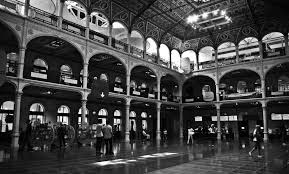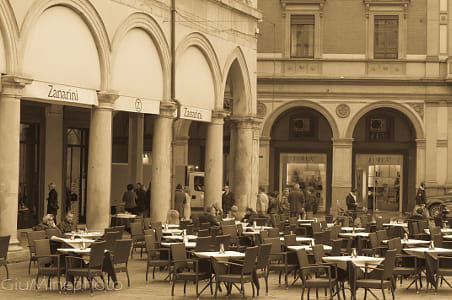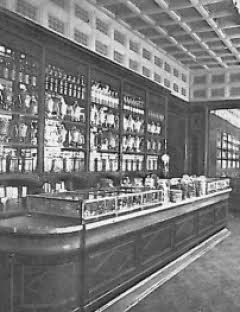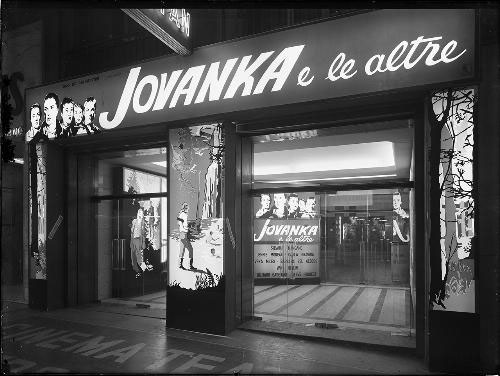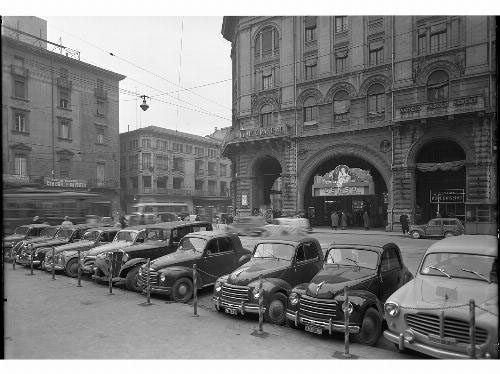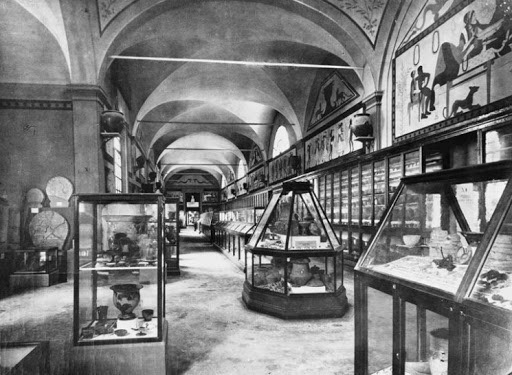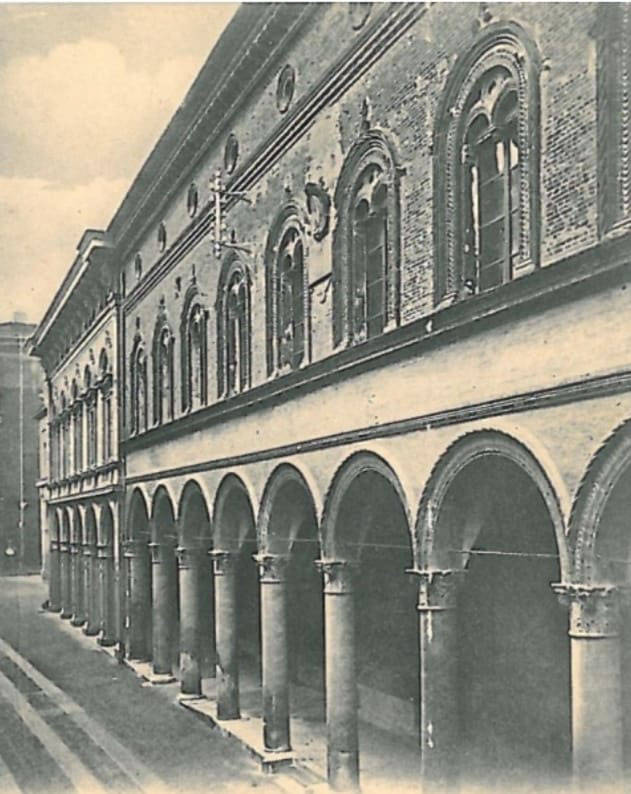BOLOGNA A CITY THAT CHANGES
NANNI BOOKSHOP
Known as the oldest bookshop in Bologna, it was inaugurated in 1825 by the Marchesi family and in 1928 it was taken over by Arnaldo Nanni, who equipped it with the characteristic "Parisian stalls" under the portico of Death. Since the Second World War, the Nanni Library has started a systematic action of finding rare (or in any case difficult to find) texts relying on the reprint of works of philosophy, medicine, natural sciences, engineering and literature. Over time, a link has been established with the actual book business: a "cultural deposit".
The library has been able to respond over time to various "rarity" questions, satisfying the requests from Italian, European and American libraries and universities, thus contributing to the affirmation and dissemination of the Bolognese culture.
LIBRACCIO
The first Italian bookshop called Libraccio opened in 1979 in via Corsico in Milan: the idea was born from four boys of about twenty, who met at the second-hand book market in Largo Richini, in front of the State University. 36 years have now passed and, nowadays, Libraccio is the largest chain of used and school books in Italy, with offices scattered throughout Italy, but it always remains independent, in the sense that it is not controlled by any publisher.
Used non-school books are divided into two categories: "antiques" books, which are those published before 1900, considered collectibles, while "modern" books are those published in the 1900s, particularly in its first half.
SALABORSA LIBRARY
The Salaborsa Library was inaugurated in 2001 inside Palazzo d'Accursio, the historic seat of the Municipality of Bologna. It overlooks piazza Nettuno and via Ugo Bassi. This library is responsible for general information, documenting contemporary culture through books, audio books, newspapers, comics, magazines, maps, videos, audio CDs, DVDs, CD-ROMs and databases. The objectives of the library include the spread of the use of electronic resources and access to information technology.
Under the transparent flooring, you can see archaeological finds due to the stratification of various civilizations: the Villanovan one, the Etruscan Felsina and the Roman Bononia. The foundations of a monumental public building, probably the city basilica, were also found in the area now occupied by the Salaborsa.
ROXY BAR
Since its opening, the Roxy Bar has been a symbol for the city, especially thanks to the influence of the singer Vasco Rossi and his song Vita Spericolata, from which the place takes its name. Ironically the main attraction, however, are the bathrooms on the lower floor: over the years completely covered with signatures, dedications and texts. What contributed to making the bar even more popular was the show “Roxy bar”, which aired right from the bottom floor of the bar, from 1992 to 2001, run by Red Ronnie. The broadcast aimed to be a means of meeting for young people with their favorite musicians, who are put there on the same level as the public, talking face to face with everyone present. However, they were not only talking about music, but also about society and current events. The show was therefore very successful, so much so that it won three television awards within three years.
On December 12, 2011 the now famous Red Ronnie gave life to a new experiment, a web TV that he called Roxy Bar TV with music available 24 hours a day. The programme ended, and with it also the Roxy Bar closed, on 18 December 2016, after almost 25 years. The place reopened after almost 4 years, under a different management and almost completely "cleaned up" but still with the historic name.
ZANARINI COFFEE SHOP
The headquarters of the Zanarini Pastry Shop were initially located in the premises previously occupied by the Rovinazzi Pastry Shop, in via D'Azeglio 34, which subsequently moved to via Farini 2, where currently the premises have been occupied by the Mondadori Bookstore. It was in 1930 that Enrico Zanarini opened this coffee shop, which still today is one of the most famous in Bologna.
Zanarini was the apprentice of a baker who later made his fortune. Over time, his business developed and he was able to open new premises in other cities in the region as well. On his death, it was his son who continued his business, by transforming the simple bar in Piazza Galvani into the business we still know today, for a long time the most fashionable in the city.
EDEN COFFEE SHOP
For many years, traces of this amazing theatre were lost. The original name was Eden Kursaal, the first café-chantant in Bologna, built inside Palazzo Maccaferri in a neo-Renaissance style, it finds its place on Via Indipendenza next to the Montagnola Hill. From 1899, when it was inaugurated, until 1923, the Eden theatre was the most fashionable venue in the city. Frequented above all by the Bolognese who loved to have fun at night (also called, in dialect, biassanot), who wanted to enjoy the good life, often with a lot of money.
Following too much competition from the other theatrical spaces open on the main street, Eden interrupted programming its shows, but kept the restaurant service and transformed the space of the stalls into a dance hall. It is currently the breakfast room of the Hotel I Portici and occasionally returns to the scene of literary or musical events. It is also considered a historical Cultural Heritage site of the Emilia-Romagna region.
ARENA DEL SOLE
It is located in via dell'Indipendenza 44 and on the neoclassical facade there is written: 'place given to daytime shows'. The Arena del Sole was in fact born in 1810 as an open-air theatre. For a century, it functioned as an arena for summer performances, but in 1916 it was equipped with removable covers, and the structure was also used in winter. In the following decades the popularity of cinema as a form of entertainment increased, leading to an increase in the number of films in programming at the expense of theatrical performances.
In 1949 the hall was definitively transformed into a cinema. However, when in 1984 the building was purchased by the municipality of Bologna there was an immediate resumption of theatrical activity.
VILLA MAZZACORATI THEATRE
Located in via Toscana 17-19, the theatre of the villa Aldrovandi Mazzacorati is the only example of a suburban private theatre survived in the Bologna area. It was inaugurated on September 24, 1763 (during the Age of Enlightenment) and it is a real neoclassical jewel. Thanks to its still excellent acoustics it is still used to host shows, popular and opera events or concerts.
Once it offered space to 200 people, while today "only" to 95. However, we must consider that in the past the theatrical spaces were very crowded.
ZARRI PHARMACY
The Zarri pharmacy, in via Ugo Bassi 1, was founded by Luigi Cesare Barbieri in 1814, a direct descendant of a lineage of fourteenth-century pharmacists who had a shop in Sant'Andrea degli Ansaldi.
At the time, the Zarri pharmacy was the only one in the city to have attached a laboratory for the preparation of drugs. As evidenced by the price lists still kept in the archive, it prepared an infinite multitude of medicines, including injectable ones. Unfortunately, in the last period, due to economic problems, the pharmacy closed. But its sign and its “retro” exterior will always remain a destination for those visiting Bologna.
PALAZZINA MAJANI
An elegant 'palazzina' is built at the beginning of via Indipendenza. It is one of the best examples of Art Nouveau buildings in the city. The Palazzina Majani was completed in 1908 on commission by Giuseppe Majani, following the project of Augusto Sezanne. In addition to a laboratory, it also contained a bar and a dance hall upstairs. The architect's idea was to build a Viennese space in the heart of the city, which stood out in the medieval panorama of the historic centre.
The building soon became one of the most important centres of aggregation of the nobility and the city bourgeoisie. On the terrace on the first floor very often an orchestra played, whose music was audible by all the citizens n the city centre. Since 1953 the building has housed a bank, until it was completely converted to commercial use in 2004 by the clothing chain H&M.
PIAZZA SANTO STEFANO
Piazza Santo Stefano is located in front of the well-known seven churches of Bologna: the church of the Crucifix or of San Pietro, the church of San Giovanni Evangelista, the church of the Confessi, the church of San Vitale and Agricola, the church of the Holy Sepulcher, the church of the Atrium and the church of the Holy Trinity. between 1873 and 1878, thanks to the toponymic reform, Piazza Stefano and Strada Santo Stefano were united in via Santo Stefano, which has always kept this name despite the fact that none of the churches or monuments are dedicated to Santo Stefano.
It is said that in the centre of this square there was once a huge oak tree to shade pilgrims, tourists and even ordinary citizens who spent their days outdoors.
PIAZZA MAGGIORE
In 1200 the construction of the famous Piazza Maggiore began. It started not from the large pavement that covers the square, the so-called "Crescentone", but from the structures that surround it, in fact it started from the Palatium Vetus Communis Bononiae (which later became Palazzo del Podestà), built on an open space area that was called "Curia Comunis" or "Platea Comunis" from 1200 to the whole of the fifteenth century.
The name "Piazza Maggiore" began to be used only in the sixteenth century, later it will be made official by the Napoleonic reform as the only name. In 1944, during the period of the Republic of Salò, the name of the square changed again, becoming the "Piazza della Repubblica". At the end of the war, however, with a resolution on 23 October 1945, the famous square returned to being known as Piazza Maggiore.
METROPOLITAN / APOLLO CINEMA
In 1912 it was decided that some shacks in via dell’Orso had to be demolished. On 12 October a year later, the Apollo Theatre was inaugurated in that area, which could be accessed by entering from street number 38 in via dell’Indipendenza. Soon the place became very famous: it hosted shows of multiple varieties: cafè-chantants, operettas and music; rarely even operas.
In 1938 there was a serious decay, but the theatre continued to be active until, during the bombing of 25 September 1943, it was reduced to rubble. After the end of the Second World War it was recovered and in 1950 it was transformed into the Metropolitan cinema. Now, however, it is the seat of a commercial activity.
CINEMA MODERNISSIMO
At the beginning of the twentieth century the race towards progress transformed the ancient historical centers into modern cities. The Cinema Modernissimo, inaugurated in 1915, was an underground cinema with two rooms with access from Piazza Re Enzo. One of the two cinemas will remain in business until 2007 under the name of Cinema Arcobaleno, one of the most popular cinemas on the city circuit. In 2016 the restoration works of the underground theatre began, this event represents a unique opportunity for the city of Bologna. "Here we will present the films, we will discuss cinema, we will talk with the directors."
"All day, every day," says Gianluca Farinelli, director of the Bologna Cinematheque. He walks around the open construction site and points out spaces, chairs, screens, stairways, ceilings and walls, imagining everything as if it were already true. "Delivery is fixed to December 5, 2021, but we have good hopes that we can also anticipate the times." It should have initially opened two years ago, then last year, if it hadn't been for the Covid-19 pandemic, but now we travel quickly so that 2021 is finally the year of the inauguration.
CIVIC ARCHAEOLOGICAL MUSEUM
The Civic Archaeological Museum of Bologna is housed in the fifteenth-century Palazzo Galvani, the ancient "Hospital of Death". The museum was inaugurated in September 1881, with the merger of two museums: the University and the Municipal. We can place the current museum as one of the most important Italian archaeological collections and it is highly representative of local history, from prehistory to the Roman age. In fact, its Etruscan section is identified as the starting point for getting to know the civilization of the Padana Etruria, which had Bologna as its capital; the Etruscan Felsina.
The ancient collections contain masterpieces of Greek and Roman art. Of particular note is the collection of Egyptian antiquities, one of the most important in Europe. Between 1972 and 2012 the Museum hosted over 150 archaeological and artistic exhibitions and displays.
PALAZZO FAVA
The Fava family took possession of this building in 1546, but the construction dates back to much earlier. The current structure takes shape in the Renaissance, albeit with important restorations that took place later.
After the numerous restoration interventions, on January 28, 2011 Palazzo Fava has been inaugurated to the public as Palazzo delle Esposizioni. It includes a series of exhibitions distributed on the various floors of the new exhibition spaces, mainly with works taken from the Carisbo Foundation's Modern and Contemporary Art Collections.
PALAZZO PALLAVICINI
Palazzo Pallavicini was born in the middle of the fifteenth century, under the Bentivoglio Government. It then became the property of the Sala family, to then pass over time to the Volta, the Marsili and the Isolani counts, who in 1680 had it partially restored in what were called "ways of senatorial architecture", by Paolo Canali. The architect designed and built the monumental staircase and the hall (with a lantern ceiling), which became the highest in the city together with that of Palazzo Ranuzzi.
With the Pallavicini family, the building became the seat of a European court, restoring an image worthy of a palace. In his new hall, important relations were established with international diplomacy, parties and banquets were prepared, concerts were organized, important families and various rulers were hosted. The staircase was also important: it hosted numerous memorable processions for many years. Today, however, it is limited to being the setting for important exhibitions and events.
Mambo
The museum offers a path that goes from the postwar period to the present day. It is located in a nice and quite comfortable position. It is equally interesting to enter it, given that the structure once housed a bakery, but over the years it has undergone many transformations to get to its current form. Mambo has a large network of contacts and collaborates with numerous institutions and academies in order to stay up to date.
Museo tattile
The tactile museum of Bologna allows people with physical ailments of any kind to have an artistic experience through touch. The organization was founded in Bologna in 1999, and is the result of research started in 1995 by the School of Applied Sculpture Association, in collaboration with the Chair of Physiopathological Optics of the Sant'Orsola Hospital, the Unione Italiana Ciechi and the Francesco Cavazza Institute for the Blind in Bologna. It features a total of around 40 works that create a path through the curves and shapes of famous works.
Museo virtuale VR
The time machine is a museum born in 2018 and wants to reconstruct the various historical times of the city through the use of virtual reality. The most beautiful attractions, according to a survey, are the "Tower and power" and the "Tutankhamun". This museum is also open to children aged 8 and up.
Created by: Alice Matteuzzi, Chiara Martelli, Giorgia Ruggeri, Giulia Esposti, Matteo Mobrici and Alessandra Kadabashyan.
III D, Beni Culturali, IsArt Liceo Artistico F. Arcangeli, school year 2020-21
Your report has been submitted.
There was a problem submitting your report. Please contact Adobe Support.
Report Abuse


